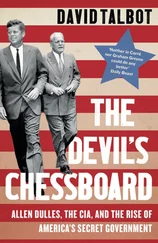As Smith recalled, “We all get over in the corner one day and say, ‘Damn, man, check this out, we got all the power right here. Let’s take this one step further.’” The Brand’s California leaders decided to establish a chain of command modelled loosely on the structure of the Italian Mafia. A council of about a dozen members would manage gang operations throughout the state prison system. Each council member would be elected by majority vote. He would be responsible for enforcing all of the gang’s policies, which would now be codified; he also could authorize a hit at any moment, as long as it wasn’t on a fellow A.B. member. The council’s actions would be overseen by a three-man commission. Authorities say that Thompson and Smith served on the California council. In the federal prison system, where the gang set up a similar hierarchy in roughly a dozen maximum-security prisons, the Baron and T. D. Bingham allegedly became high commissioners.
The A.B.’s new structure strengthened its grip, but there remained one outstanding obstacle: snitches. Though other crime families had to worry about members “rolling over,” in prison everyone had an incentive to “flip,” and all an inmate had to do was whisper in a guard’s ear. In the early nineteen-eighties, a former gang member, Steven Barnes, had testified in a murder rap against one of the new commissioners and was housed in protective custody, where no one could get to him. In response, the Aryan Brotherhood settled upon a new policy: If it couldn’t get to you, it would get to your family. “What we wanted to do was hit… Barnes’s wife,” Smith explained. “If we couldn’t get to her, we’d move then to his brother… or sister and from there we’d work our way down the list… That was policy that we’d established that we’d do from then on.”
To carry out its new policy, Brand leaders needed to find a hit man, someone who could, in the words of the gang, “step up.” And so they allegedly turned to Curtis Price, a forty-one-year-old made A.B. member who was about to be paroled from Chino prison, and who would, according to a former gang member, “kill as to directions received from the A.B. council.” Described by his parole officer as “one of the most dangerous state prisoners I’ve dealt with in my twenty-two years” of service, Price was six feet tall, with short brown hair and vacant blue eyes. In photographs, the bones around his pallid face protrude and give him a slightly ghostly air. Price, who had once expressed hope of going into law enforcement, had in more recent years stabbed another inmate and taken two guards hostage, telling one, “I’ll blow your partner’s head off.”
Court and prison records reveal that upon his release, on September 14, 1982, Price met a twenty-two-year-old mother of two children named Elizabeth Hickey and stole several weapons from her stepfather’s house, including a twelve-gauge shotgun and a Mauser automatic. Price then drove to the home of Steven Barnes’s father, Richard, in Temple City, California, and shot him three times in the head, execution style. Barnes’s neighbors found him lying on his bed, face down, his cowboy hat resting nearby.
Afterward, Price returned to Elizabeth Hickey’s home and beat her to death, crushing her skull in five places, in an apparent attempt to eliminate her as a potential witness. He then bought a ticket to see the movie “Gandhi.” The gang soon received a postcard in prison. It said, “Business has been taken care of.”
At one point, I tried to find Michael Thompson. I had been told that he had mysteriously dropped out of the Aryan Brotherhood shortly after the Barnes killing, and had testified against Price, who, in 1986, was convicted of the two murders. Thompson became the highest-ranking defector in the gang’s history. (“He’s big, he’s tough, he’s mean, he’s killed, and then all of a sudden he’s gone, just rolled over,” one A.B. associate said in disbelief.) Thompson was thought to have as many death threats made against him as anyone in prison; his family had been relocated, and he was being held in the correctional system’s version of the witness-protection program. He was moved from prison to prison anonymously, and was often kept in a protective-custody unit, walled off from most inmates.
After weeks of searching, I called the prison where I had heard Thompson was incarcerated. The authorities insisted that there was no one there by that name. Moments later, I received a call from a law-enforcement official who knew I was trying to find Thompson. “They think you’re trying to kill him,” she said. “They’re moving him out of the prison right now.”
After explaining to officials why I wanted to speak with Thompson, I was able to get a letter to him, and, with his agreement, I headed to the maximum-security prison where he was being held under the name of “Occupant.” To get inside the prison, I had to submit my car to a search, and I was given a checkered shirt to replace my blue oxford, which happened to match the color of some inmate uniforms and was therefore forbidden. There were several children with their mothers filing in alongside me; they wore white dresses or neatly pleated pants, as if they were attending church.
We passed through several steel gates, each door clanking loudly behind us, before reaching a brightly lit room filled with wooden chairs and tables. While the other visitors were allowed to sit freely with inmates, I was led to the back of the room, where a three-foot-by-three-foot bulletproof window was cut into the wall. A chair was placed in front of it, and I sat down and peered through the scuffed plastic. I could see a small cement cell, with a telephone and a chair. The room was sealed on all sides except for a steel door at the opposite end. A moment later, the door clicked open and Thompson, a giant of a man, appeared in a white prison jumpsuit with his hands shackled behind his back. As a guard removed his chains, Thompson bent forward and I could see his face. It was covered with a hermit-like beard. His hair reached to his shoulders and was parted down the middle, in the style that was fashionable in the seventies, when he was first convicted of murder. As he came closer to the glass, I could see, amid the thickets of graying hair, his bright-blue eyes. He sat down and reached for the phone, and I picked up mine.
“How was your trip?” he asked.
He spoke in a soft, courteous voice. I asked him why he had dropped out of the Brand, and he said he made his decision after the debate over whether to kill Steven Barnes’s father and other family members. “I argued with them for days,” he said. “I kept saying, ‘We’re warriors, aren’t we? We don’t kill children. We don’t kill mothers and fathers.’ But I lost. And they killed him, execution style, and then they killed Hickey, an innocent woman, just because she knew where Price had gotten the gun. And that’s when I walked away. That’s when I said, ‘This thing is out of control.’” He leaned toward the window, his breath steaming the glass. “I am still willing to fight someone in here, head up, if I have to. That’s the culture of where I live. But I was not for killing people on the outside, people in your world.”
When I asked him what he initially found compelling about the gang, he paused for a long moment. “That’s a very good question,” he said. There was the protection, he suggested, ticking off the reasons. There was the sense of belonging. But that wasn’t really it. For him, at least, he said, it was the rush of power. “I was naïve, because I saw us as these noble warriors,” he said. In the eighties, he added, he had tried to change the nature of the gang. “I thought that by organizing we could make the gang less bloody. I thought we could strip away the irrational killings. But I was foolish, because at some level you could never remove that. And the structure only allowed the gang to be more deadly.”
Читать дальше











